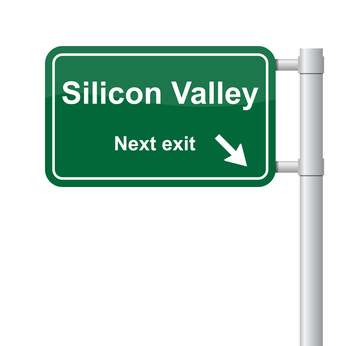
※文末に【参考和文】があります。
Hi. My name is John Sasaki. I am a California-licensed corporate lawyer living here in Tokyo and have been working closely with AZX for the past few years to assist their clients on international matters.
Before moving to Japan in 2002, I worked at Wilson Sonsini Goodrich & Rosati in Silicon Valley, where I was the leader of the firm’s Japan-related practice. And so now I specialize in assisting Japanese technology start-up companies and venture capitalists in their Silicon Valley and other international transactions.
More recently, I have adopted a small dog. Her name is Ichigo, which means “strawberry” in Japanese. Here is a recent photo. Sometimes I think she is really a cat. What do you think? 
Anyway, I have been asked to contribute to the AZX blog by writing some articles on Silicon Valley transactions and U.S. law. My first article will discuss how your company can enter the U.S. market. There are basically 4 ways for a foreign company to enter the U.S. market.
- Third Party Contract – Under this approach, you are basically asking someone else to develop your business in the U.S. The contract with the third party can take several forms, such as a distributor agreement, sales representative agreement or a license agreement. If you choose this approach, you will need to understand some basic U.S. contract concepts.
- Subsidiary – This is the “do it yourself” approach. You would establish a presence in the U.S. and either staff it from the headquarters or hire people locally, or a combination of both. If you choose this approach, you believe that you can develop your business in the U.S. without the assistance of third parties. Or this could be an interim step to assess the market and your options further, before making a final decision on the most appropriate approach to develop the U.S. market. If you choose this approach, you will need to understand the U.S. equivalents of all of the aspects of running your Japanese company.
- Joint Venture – This is a combination of the first two options. You would bring in a local partner, but you would also stay directly involved. You may choose this approach, for example, if you want to learn from the local partner with the ultimate goal of being able to do it yourself at some point. This could also be an interim step to the next alternative approach, acquisition. If you choose this approach, you will need to understand basic U.S. contractual matters as well as certain aspects of running a U.S. business, especially corporate governance.
- Acquisition – Under this approach, someone else develops the business in the U.S., but you make it your own by buying the business. This requires the largest commitment, certainly from a financial standpoint and perhaps also from a resource allocation standpoint. If you choose this approach, you will need to understand the basics of M&A in the U.S., as well as certain aspects of running a business in the U.S. once you complete the acquisition, including corporate governance.
So, how do you decide on the best approach? Here are some of the factors you should consider.
- Experience and Knowledge – How much experience and knowledge do you have on the U.S. market? In most cases, the answer is probably “not so much”, so you may decide that a partner with more experience and knowledge in the U.S. market is necessary or valuable. Depending on exactly how much experience and knowledge you have, you may choose to enter into a third party contract (if you have very little experience and knowledge) or the joint venture or acquisition approach (if you have some experience and knowledge).
- People – Running a business in the U.S., and developing your company’s business in the U.S., will require people. Do you have the people to develop your business in the U.S. on your own, or will you require outside help to do so? For most start-ups, the answer is usually “I don’t have enough people to run my business in Japan, let alone outside of Japan”. In that case, asking someone else that may have more resources to assist may be the best approach.
- Money – How much can you afford to invest in the U.S. business? Doing it on your own is expensive. So is buying a company. Do you have the financial resources to develop the U.S market on your own? If not, you may need a partner. If you have no money, then perhaps a third party contract makes the most sense. If you have some financial resources, perhaps a joint venture makes sense.
- Flexibility and Control – How much flexibility or control you wish to have over the development of the U.S. business can affect your approach. A subsidiary gives you the most control and some flexibility, whereas an acquisition gives you some control but less flexibility. In a joint venture situation, you have less control and less flexibility, while in a third party contract you have very little control but more flexibility.
- Risk vs. Reward – What is your risk appetite? The U.S. is a tough market. How much do you want to bet on your success there? An acquisition involves a huge risk, but potentially a huge reward. A joint venture hedges your risk, but also requires you to share any reward. A subsidiary requires risk, but perhaps involves less potential for a large reward than an acquisition. And a third party contract involves the least risk, but also the lowest potential reward.
- Business Objectives – What are your business objectives for the U.S. market? Is it a key market? Or is it a peripheral market for your business? Do you want to grow organically, or are you looking for a bigger and faster market entry? This can affect your approach. If it is a key market, you may wish more control or you may wish to rely on someone with more experience and knowledge. If you want to accelerate your development, an acquisition may be the best approach.
Anyway, below is a chart that summarizes how your analysis of the various factors can affect your approach.
| Third Party Contract | Subsidiary | Joint Venture | Acquisition | |
| What is the level of your experience and knowledge? | Very Low | Very High | Low | Low |
| What is the number of people you have in-house to develop the market? | Very Low | Very High | Low | Low |
| What is the level of money you have to develop the market? | Very Low | High | Low | Very High |
| What is your desired level of flexibility and control? | High Flexibility, Low Control | Very High Flexibility, High Control | Middle Flexibility, Middle Control | Low Flexibility, High Control |
| What is your risk vs reward appetite? | Low Risk, Low Reward | High Risk, Middle Reward | Middle Risk, Middle Reward | High Risk, High Reward |
| What are your business objectives for the U.S. market? | Want to expand, but not enough to commit a lot of resources | Want to grow organically | Want to do it myself, but need to learn from someone else | Want to expand big and fast |
These are just some general metrics, so they may not apply in all situations. But, hopefully, this will assist you to develop the best approach for your company’s entry into the U.S. market.
In future articles, I will discuss each alternative separately in more detail, including some guidance on the important points to remember in each approach, and how your approach should differ than your approach in Japan.
If you have any questions, please feel free to contact me at jsasaki@jsvlaw.com.
【参考和文】
皆さんこんにちは。弁護士の林賢治です。本人の自己紹介にあるとおり、私たちはこの数年、国際案件等でJohnと一緒に仕事をしており、今回お願いしてブログを書いてもらいました。Johnは日本語も流暢ですが、よりスムーズな英語で書いてもらい、読者の便宜のために和文を追記する形にしました。以下の内容は、Johnとの協議により、ニュアンス等を考慮して多少意訳及びアレンジしたものであり、直訳ではない点ご了承下さい。
どうやる米国進出? 4つの方法について
こんにちは。ジョン佐々木です。私は東京在住のカリフォルニア州弁護士で、この数年AZXと親密に連携して、AZXのクライアントの国際案件をサポートしています。
2002年に日本に移住するまで、シリコンバレーのウィルソン・ソンシーニ・グッドリッチ&ロサーティ事務所で、日本関係プラクティスのリーダーとして働いていました。その経験を生かし、現在は日本のテクノロジースタートアップ企業やベンチャーキャピタルに対して、シリコンバレー関係などの国際案件のサポートを提供しています。
プライベートでは、最近小さな犬を飼い始めました。彼女の名前は日本語で「いちご」です。写真を載せましたが、私はときどき本当に猫なんじゃないかと思ってしまいます。皆さんいかがでしょう?

このたびAZXから、シリコンバレーの実務や米国法についてのブログの記事を依頼されましたので、ベンチャーの方から聞かれることの多い日本企業の米国進出の手法を最初のテーマとさせていただきました。 米国市場に海外企業が進出する方法は、大きく分けて4つです。
- 業務委託 現地の企業と契約を締結し、その企業を通じて米国でのビジネスを展開するアプローチです。契約形態としては業務委託契約、販売代理店契約、ライセンス契約などが考えられます。この方法をとる場合、米国における契約についての基礎的な知識が必要になります。
- 子会社設立 “Do it yourself”のアプローチです。米国に拠点を作り、日本から人員を派遣するか現地で雇用することになります。基本的に、他企業の援助を受けずに事業展開する自信がある場合に採用する方法ですが、最善の米国進出方法を最終判断する前のステップとして、暫定的にこの方法で米国拠点を作るケースもあり得ます。子会社設立の方法をとる場合、米国における企業運営の全般を理解することが必要になります。
- ジョイント・ベンチャー 1と2の折衷的な方法になります。現地企業との契約によってパートナー関係を形成しながら、自身も直接ビジネスに関与します(パートナー企業と共同で現地法人の株式を保有する形態が最もポピュラーです。)。米国の現地パートナーから学びながら、最終的には自社でビジネス遂行できるようにしたい場合にこの方法がとられる場合があります。また、次に述べる方法である買収を実行する前段階の、暫定的なステップとして利用されることもあります(例えば、ジョイント・ベンチャーでスタートした後、状況によってパートナー企業から株式を譲り受けたり、パートナー企業自体を買収するケースがあります。)。ジョイント・ベンチャーの方法をとる場合、米国の契約の基礎知識と、米国の企業運営、特にコーポレートガバナンスに関するある程度の知識が必要になります。
- 既存企業の買収 他の企業が米国で進めたビジネスを、企業又は事業の買収によって得る方法です。財務的な面は勿論、おそらくリソースの割り当ての面でも、最も大きなコミットが求められる方法です。この方法をとる場合、米国のM&Aの基礎知識が必要であり、買収以後は米国のコーポレートガバナンスなど企業運営に関する知識を、ある程度理解することが必要になります。
どのアプローチを選択すべきか? その際に検討すべき要素がいくつかあります。
- 知識と経験 米国市場の知識と経験をどの程度持っているか? 「あまりない」というケースが多いと思いますが、その場合は知識と経験のあるパートナーと組むことが必要かつ有益です。殆ど知識経験がなければ業務委託、多少ある場合はジョイント・ベンチャーか買収を選択することが考えられます。
- 人員 米国で事業を展開し、運営するには人員が必要です。この人員を自前で用意できるか、社外のサポートを活用する必要があるか。殆どのスタートアップ企業の場合、「日本の事業運営の人員すら不足している。日本国外はなおのこと」という状況でしょう。その場合はリソースのある他企業にサポートしてもらうのがベストです。
- 資金 米国の事業にどの程度投資できるか。自前でのビジネス展開は高コストであり、既存の企業を買収するのも同様です。米国市場を自ら開拓していく十分な資金があるか? なければパートナーが必要と思われます。また資金が僅少なら、おそらく業務委託が最も適切な選択です。ある程度の資金はあるというのなら、ジョイント・ベンチャーが適切かも知れません。
- 自由度とコントロール 米国のビジネス展開にどの程度の自由度とコントロールを保持したいかも選択に影響します。子会社設立はコントロール度が一番高く、ある程度の自由度もある一方、企業買収は一定のコントロールは可能ですが自由度は低くなるかも知れません。ジョイント・ベンチャーはコントロールも自由度も低く、業務委託の場合はコントロールは難しい反面、自由度は高いかも知れません。
- リスクとリターン リスクをどこまでとりたいか? 米国はタフな市場です。米国での成功にどのくらい賭けているのか? 企業買収は大きなリスクがある反面、大きなリターンを得られる可能性があります。ジョイント・ベンチャーではリスクをある程度ヘッジできる反面、リターンの共有を求められます。子会社設立もリスクがありますが、大きなリターンを得る可能性は買収と比べて低いと思われます。業務委託はリスクもリターンも最も低い方法です。
- 米国進出の意図 米国市場でビジネスをする目的は何でしょう。会社のビジネス全体にとって米国は重要市場か? 徐々に事業拡大していきたいのか、早く、大規模に拡大したいのか? これらの点が方法選択に影響します。重要市場であれば、よりコントロールが必要でしょうし、知識経験のあるパートナーが欲しくなるでしょう。またスピードアップしたい場合は、買収がベストな方法かも知れません。
以上の検討要素を簡単にチャートにまとめると以下のようになります。
| 業務委託 | 子会社設立 | ジョイント・ベンチャー | 企業買収 | |
| 知識経験レベル | かなり低い | かなり高い | 低い | 低い |
| 投入可能な社内人員 | かなり少ない | かなり多い | 少ない | 少ない |
| 投資可能資金 | かなり少ない | 多い | 少ない | かなり多い |
| 必要な自由度とコントロール | 高い自由度/低いコントロール | かなり高い自由度/高いコントロール | 中程度の自由度/中程度のコントロール | 低い自由度/高いコントロール |
| リスクリターンの大小 | ローリスク/ローリターン | ハイリスク/中程度のリターン | 中程度のリスク/中程度のリターン | ハイリスク/ハイリターン |
| 米国進出の意図 | 拡大したいが多くのリソースは割けない | 徐々に拡大したい | 自社で拡大したいが他社からの知見吸収も必要 | 早期・大規模に拡大したい |
以上は一般論であり、全てのケースに必ずしも当てはまるものではありませんが、皆さんのベストな米国進出方法の選択の参考になれば幸いです。
今後は、今回説明した各方法の詳細を、重要な注意点や日本との相違点などを中心に、解説させていただく予定です。 ご質問があれば、お気軽にjsasaki@jsvlaw.comまでご連絡下さい。
【参考和文作成:弁護士 林 賢治】
(以上参考和文)